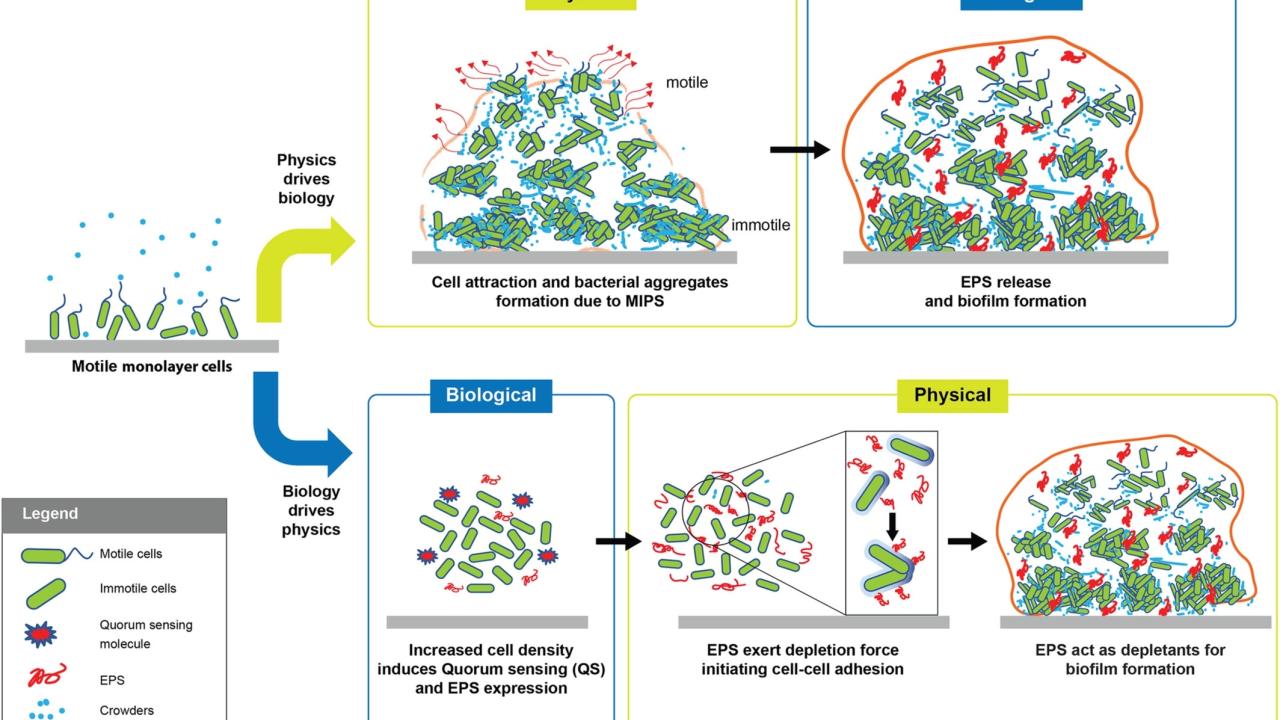
Lan Li Wong, Sudarsan Mugunthan, Binu Kundukad, James Chin Shing Ho, Scott A. Rice, Jamie Hinks, Thomas Seviour, Atul N. Parikh, Staffan Kjelleberg, Environmental Microbiology 25, 199-208 (2023)
The biofilm matrix, with its diversity of extracellular polymeric substances (EPS), remains a poorly understood entity. It consists of a heterogeneous, multifunctional microenvironment that imparts a range of emergent properties to the biofilm, including social cooperation and resource sharing, adaptation to environmental changes, and resistance to harmful chemicals and antibiotics. Generally, studies of the biofilm matrix focus on the regulation of EPS gene expression and associated biofilm phenotypes (Flemming et al., 2022; Flemming & Wingender, 2010). For example, the differential regulation of exopolymers, which impart different mechanical properties, is an often-studied genetic marker for characterizing transitions between different stages of biofilm development (Chew, Kundukad, et al., 2014; Irie et al., 2012). New insights, however, suggest that the emergent properties of the matrix, which arise because of physical interactions between EPS molecules as well as those between EPS and bacterial cells, also play important roles in biofilm formation and organization (Liu et al., 2022; Rubinstein et al., 2012). For example, the secretion and accumulation of EPS components generate new physical forces, such as osmotic stresses, bridging interactions, and depletion effects within the crowded matrix (Liu et al., 2022). These forces alter the physical environment of the biofilm, affecting conformational and aggregational landscapes and dynamics, and thus functions, of matrix biopolymers. Together with the biological program, they stabilize extended structural, compositional, and morphological gradients in space and time, drive phase transitions, immobilize cells, and induce phase separation, creating spatial functional niches within the matrix (Worlitzer et al., 2022). Considering these insights, we highlight here the emerging perspective that understanding the competition and the collaboration between physical and biological factors is crucial for a more complete appreciation of biofilm formation, dynamics, organization, and function.
DOI: 10.1111/1462-2920.16306